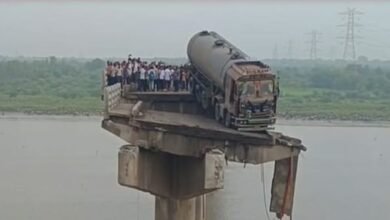DFCs demonstrate potential for efficient goods transportation & lower logistics costs
Engineering Innovations transform freight transport on India's Dedicated Freight Corridor. With construction of DFCs, the government aims to reduce logistics costs to single digits. 97% of the 2,843 km Eastern and Western Dedicated Freight Corridors is complete. Meanwhile, The 1486 km eastern section of the DFC from Soam Nagar to Ludhiana is now completed and operational.

Abhishek Byahut
Dadri/Rewari/NCT
Dedicated Freight Corridors (DFCs) demonstrate the potential for efficient goods transportation and lower logistics costs.
The 2739 km Western-Eastern DFC, developed by the Dedicated Freight Corridor Corporation of India, aims to enhance freight transport efficiency across the country.The government aims to reduce logistics costs to single digits.
With major Dedicated Freight Corridors operational, a freight train crosses every 12 minutes, totaling 350 goods trains daily on 2,843 km of DFCs. Next year, the number of freight trains is expected to rise to 480 per day.
Chitresh Joshi, Deputy GM of DFCCIL, noted that 97% of the 2,843 km Eastern and Western Dedicated Freight Corridors is complete. The Nai Dadri to Mumbai Western corridor spans 1506 KM, with all work finished except for the final 104 KM in Maharashtra between Vaitarna and JNPT, which will be completed by December 2025.
The 1486 km eastern section of the DFC from Soam Nagar to Ludhiana is now completed and operational, he added.
Currently, around 10% of Indian Railways’ freight is transported via this corridor, with projections indicating it could rise to 20%. Once operational, the project will significantly enhance the freight capacity and efficiency of Indian Railways, allowing freight trains on DFCs to reach destinations directly and more swiftly, saving time and resources, said Chitresh Joshi, Deputy GM of DFCCIL.
Full connectivity to JNPT and other major ports will further facilitate international trade, according to Chitresh Joshi, DGM at DFCCIL.
DFC will revolutionize transportation by efficiently moving large volumes of goods in double stack containers, including milk tankers, e-commerce products, cement, and coal etc. “Faster delivery of goods over longer distances will save time and costs for traders and consumers. DFC will significantly enhance trade and improve supply chain efficiency,” the official stated.
Trucks are now being loaded onto freight trains, with milk trucks from Palanpur transported to Rewari in Delhi NCR via the DFC corridor. Previously, the distance took 20 to 22 hours to cover; now it takes only 12 to 16 hours, the official added.
Chitresh Joshi, Deputy GM of DFCCIL said that according to a UNI report, this truck travel emits significant carbon emissions that harm the environment. “Switching trucks to freight trains will cut approximately 457 million tons of carbon emissions by 2030, benefiting the environment,” Joshi said.
Chitresh Joshi further state that logistics costs in India are currently about 13-14% of GDP, compared to 8-9% in the US and China. Chitresh Joshi noted that once the DFC is fully operational, India’s logistics costs will significantly decrease, enhancing its global competitiveness. The reduction in logistics costs will benefit both entrepreneurs and consumers by lowering goods prices and ensuring timely supply, according to Mr. Joshi.
The DFC network, which passes through key industrial states like Uttar Pradesh, Bihar, Haryana, Rajasthan, Maharashtra, and Gujarat, will directly enhance the economy and industrial activities in these regions. Industries in these states will benefit from DFC by improving productivity and enabling fast, affordable transportation of goods, enhancing the supply chain across the country.
The construction of DFCs will free over 15% of Indian Railways’ lines from freight trains, enhancing passenger train services and improving travel experiences for the public.
DFC will boost Indian Railways’ revenue and transform the freight sector and overall rail network.





